Last updated on April 22, 2024

Cultivator Colossus | Illustration by Antonio Jose Manzanedo
MTG has a massive variety in its creature types, describing both races, such as goblins or elves, or professions, such as soldier or wizard. There are literally hundreds of different creature types out there, but one of the very first was a pretty unobtrusive entry: plants.
Encompassing anything of a vegetable nature, this is actually a pretty wide-spanning creature type, covering anything from a Swamp-Thing style zombie to the walking Ent-like tree elementals of Zendikar’s roil, to a literal wall of foliage. Obviously centered in green, over the years this verdant typing has covered a whole host of different styles of creature, no doubt many of which you know from their own infamy. So, let’s take a deep dive into them as we plant the seeds of our interest.
What Are Plant Creatures in MTG?

Murasa Sproutling | Illustration by Svetlin Velinov
Plant creatures cover basically anything that grows in a similar way to the plants we have in our own world. Sometimes they’re plants that we’d expect to see in some form in our own world, while other times they’re hulking, sentient wonders the likes of which would seem fantastic in even the most far-fetched fantasy world.
Most often centered in green for obvious reasons, they encompass the natural side of the color pie perfectly. There’s a relatively high number of defenders among the MTG plants due to the nature of most plants that we know being immobile. There are plenty of examples of plant creatures that can move and attack, however, so we’re not just restricted to ancient sentinels of some great woodland either.
#36. Carnivorous Plant

The first entry on our journey through this forest is Carnivorous Plant. While not up to much these days, this creature was a stat beast for the time it was printed. A 4/5 for four mana was pretty above the curve, even though it’s from a time before the defender keyword was a thing and all walls came with the automatic rule that they weren’t able to attack. Still, without some kind of evasion, attacking past this bulky Venus flytrap was far from trivial.
#35. Murasa Sproutling

An entry from Zendikar Rising is Murasa Spoutling. It was a strong piece in the kicker archetype in that Standard format, buying back a kicker card from your graveyard. This, on a 3/3 body wasn’t bad, even if green was a bit underpowered.
Unfortunately, unless you’re wanting to go all-in on the kicker mechanic, this isn’t going to do very much for you, relegating it to a place on this list, but not a high one.
#34. Carnivorous Moss-Beast

Carnivourout Moss-Beast is a great example of a fantastic role-player in Limited, particularly from a core set. It’s a big beater in green, which pretty much every set needs, and in a pinch you have a mana sink which is probably better than it looks on its face. It’s never going to make any waves in Constructed formats, or even in Commander, but it’s a great demonstration of showing what green does to a new player. The ability to grow itself seems like a perfect representation of what a plant creature should be able to do too!
#33. Grave Bramble
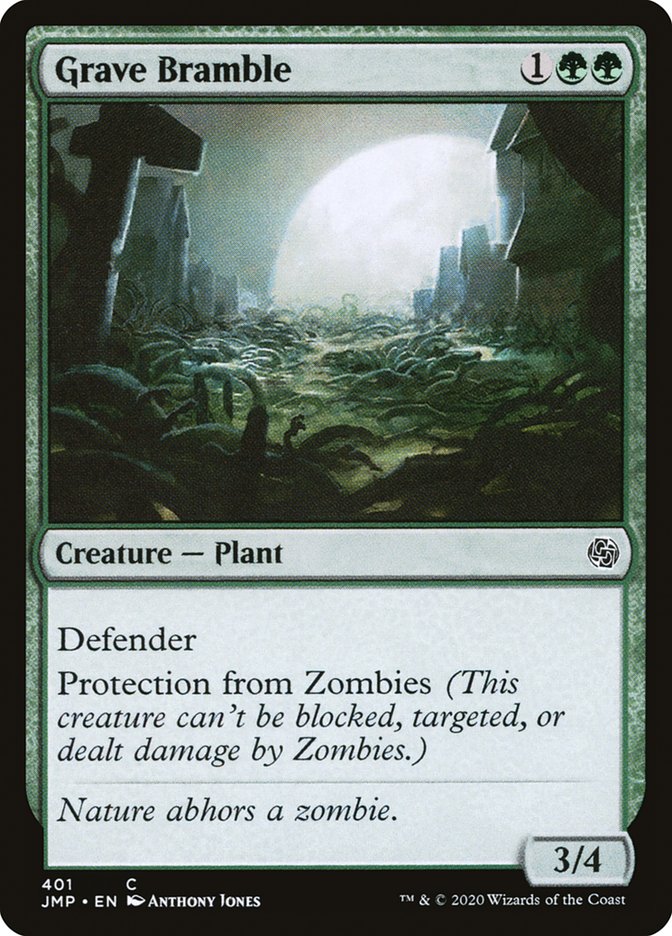
There’s a fantastic bit of trivia to Grave Bramble that every Magic player should know. When Richard Garfield was designing the original Innistrad set, the game Plants vs. Zombies was the new hotness. He was impressed enough by the game that he designed a card in homage to it that luckily fit the bill for Innistrad perfectly. A plant that has protection from zombies is a cool little easter egg that definitely needed to be brought up on this list, even if the card isn’t going to take down any tournaments. Still, even for a defender, a three-mana 3/4 at common is nothing to ignore.
#32. Portcullis Vine

Ever since the printing of Doran, the Siege Tower, there’s been a certain subset of players who love a good defenders/butts deck, and who can blame them? In a deck like this, Portcullis Vine definitely has a role to play. As a good source of card advantage while being able to hold your opponents at bay in the early game, I can’t think of a green butts deck that would want to leave home without this.
#31. Bloodbriar
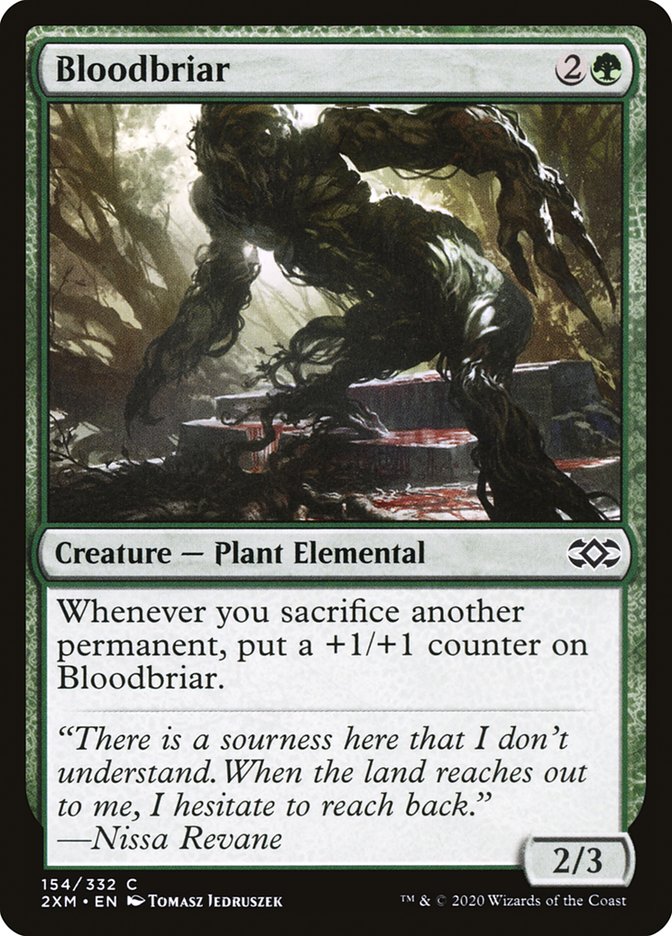
Creeping towards the graveyard-matters aspect of green, Bloodbriar cares about sacrificing permanents. Originally probably aimed at caring about creatures and occasionally lands, this has seen a bit of a bump in recent years with the plethora of Treasure cards being printed. As this cares about any of your sacrificed permanents, token or otherwise, each clue, Map, food or treasure you sacrifice is going to grow Bloodbriar, allowing it to get out of hand pretty quicky.
It's still far from being ubiquitous across formats, but this interaction is enough to bump it in playability in most green decks that care about sacrificing.
#29. Creakwood Ghoul

Creakwood Ghoul is the first card on our list that isn’t purely green (although its color identity includes green, to be fair). This has a handy little ability to exile cards from your opponents’ graveyards, something that can come in clutch at key moments. Gaining a bit of life is also a handy side effect. It’s a bit expensive, though, both for its initial casting cost and the activated ability, but I could imagine it seeing some fringe play in EDH.
#28. Bayou Groff
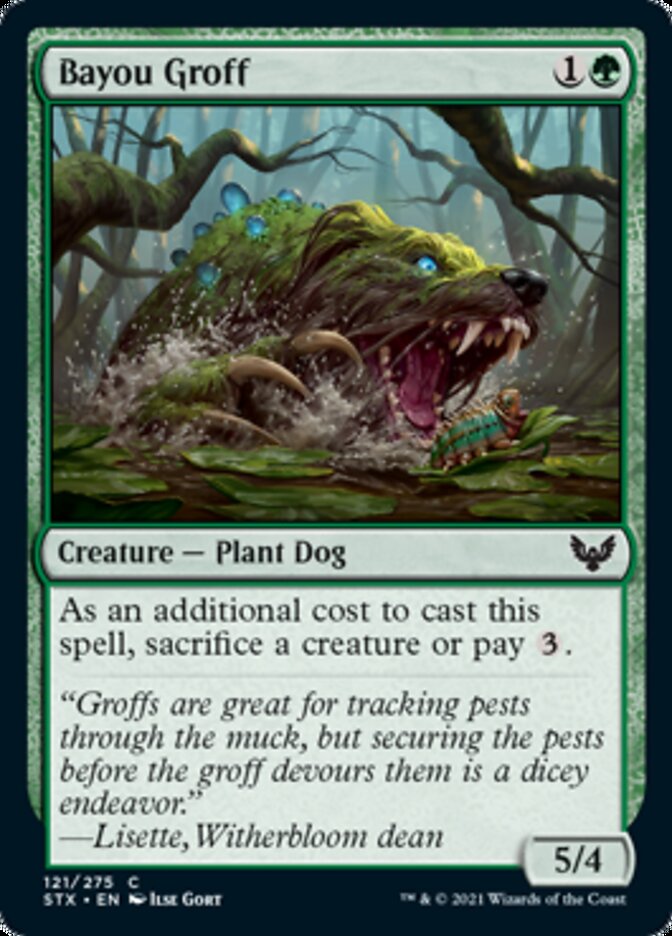
If you’re making a best-of list and there’s a 5/4 creature in there that costs two mana, you pretty much have to include it, right? Well, that’s certainly the case with Bayou Groff!
While it does technically cost a little more than two mana, sacrificing another creature isn’t a huge deal in a deck, especially as there’s a lot of crossover between plant creatures and graveyard/sacrifice synergies. This doesn’t see a huge amount of play right now, but if the right 1-drop comes along, it could certainly sneak into a Constructed format.
#27. Vine Trellis

Llanowar Elves is an incredibly powerful card, and one that Wizards doesn’t seem to want to return to Standard anytime soon. Instead, we’ve got a whole host of two-mana versions of it over the years. Vine Trellis is one of those alternatives!
It’s far from a strict downgrade, though. The 0/4 body is a pretty nice way to hold off an aggressive opponent and is tough to get past in the early game. Not a busted card in any way imaginable, but can be just what you need in the right situation.
#26. Creeperhulk
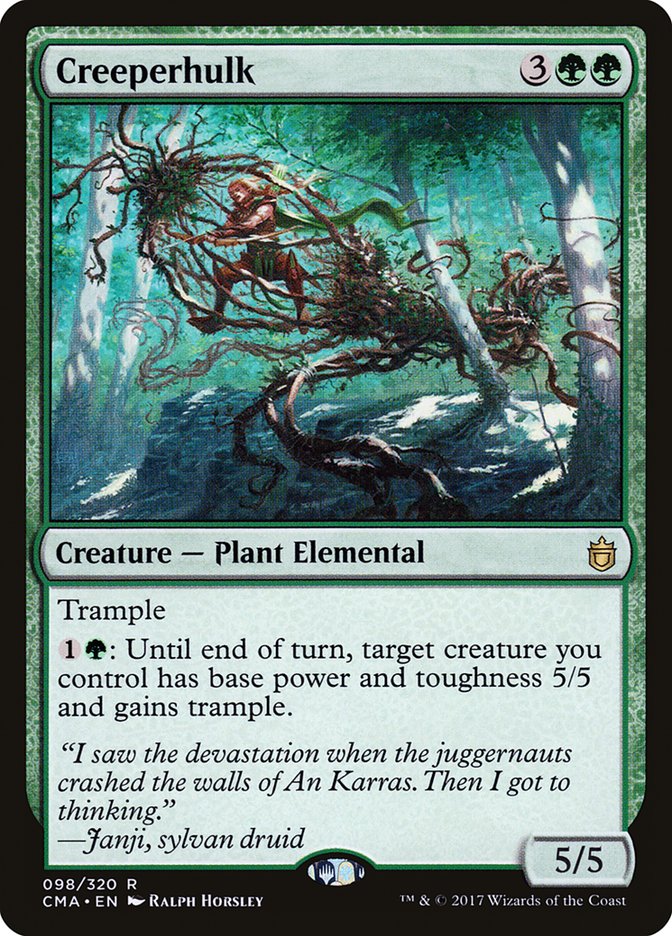
What’s better than a big beater with trample? A big beater with trample that can give your other beaters trample, that’s what! Creeperhulk is the best friend of any giant beastie that can’t get through your opponents’ chump blockers. Timmys everywhere, rejoice!
#25. Cactusfolk Sureshot
Cactusfolk Sureshot is a Gruul () card through and through, and a few things Gruul decks want more that almost any other deck are 4-power creatures, haste and trample. I know a few decks that love this alongside See the Unwritten, Life Finds a Way, and Smuggler's Surprise.
#24. Centaur Vinecrasher
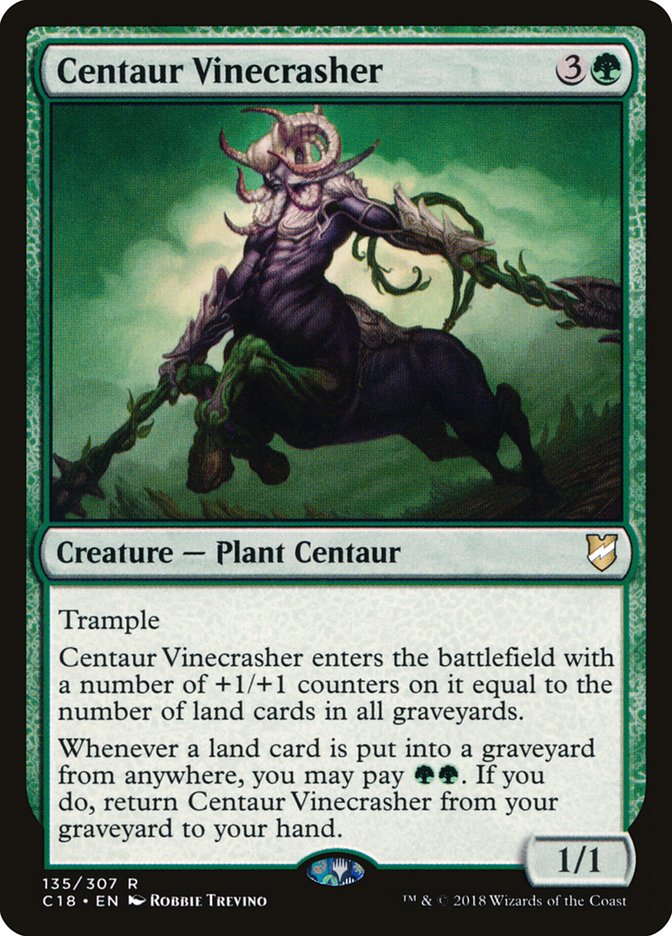
Plants, unsurprisingly, care about lands. Centaur Vinecrasher cares about lands in the graveyard in particular. If you’re playing this card, you probably want to be playing some kind of self-mill deck to get the most out of it, or at least some way to get rid of those lands. Yes, maybe its ability could put the card onto the battlefield rather than your hand, but haven’t we had enough power creep in recent years.
#23. Rot Farm Skeleton
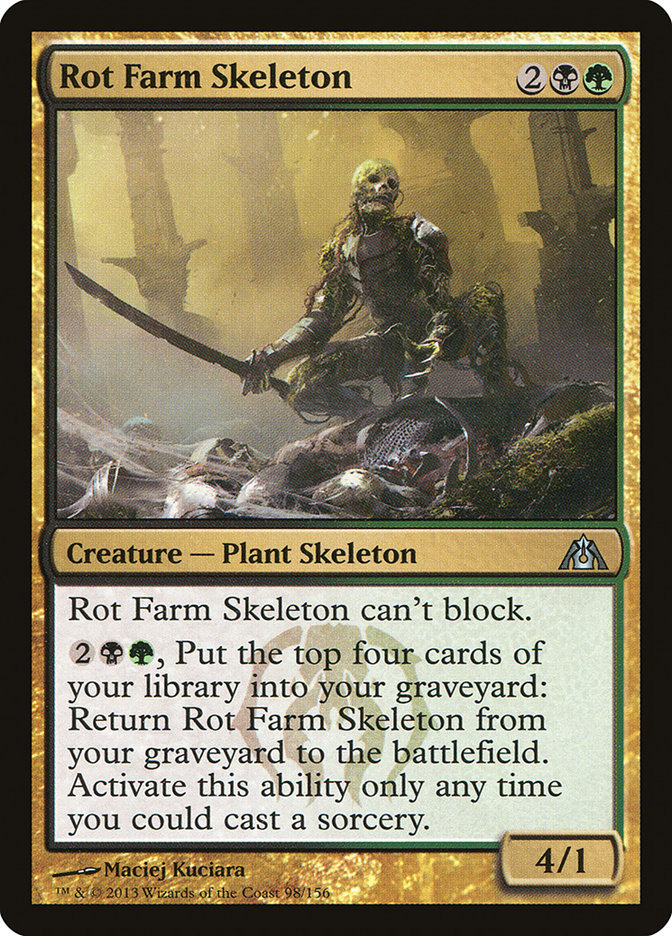
Another card creeping into black with Rot Farm Skeleton. A great inclusion in a self-mill deck, this can stock your graveyard while presenting a recursive threat. It would be nice to have this ability at instant speed, especially as it can’t block, but it’s an uncommon from over 11 years ago, so it’s understandable!
#22. Whip Vine

Whip Vine is an older card that still kinda holds up now. It’s got an interesting effect when it blocks a flier, in that you can keep both tapped down for as long as you choose then, if they play a better flier, untap Whip Vine and either nab another one, or you've stopped them from attacking.
It’s probably still relegated to a Draft card, but it’s a neat way to deal with a problematic flier.
#21. Briar Hydra

We’re starting to get into the more interesting cards now with Briar Hydra. A six-mana 6/6 with trample is always off to a good start, and not only is this a good beater, it can make your other beaters better. Each time it hits your opponent, you get to pass out some counters to one of your creatures. If you can give it double strike too? *Chef’s kiss*
#20. Vegetation Abomination
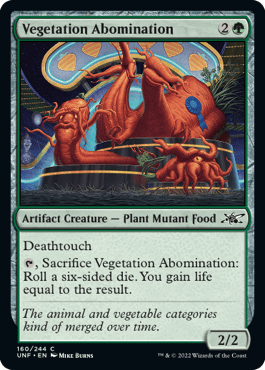
Often when I write these lists, I’ll include an Un-card as an honorable mention. These days, though, we have Un-cards in black border, so they’re no longer relegated to the novelty slot. Vegetation Abomination is a pretty good card. Not only can it block pretty much anything, it can gain you some life along the way. Great way to turn the corner in Limited!
#19. Sprouting Phytohydra
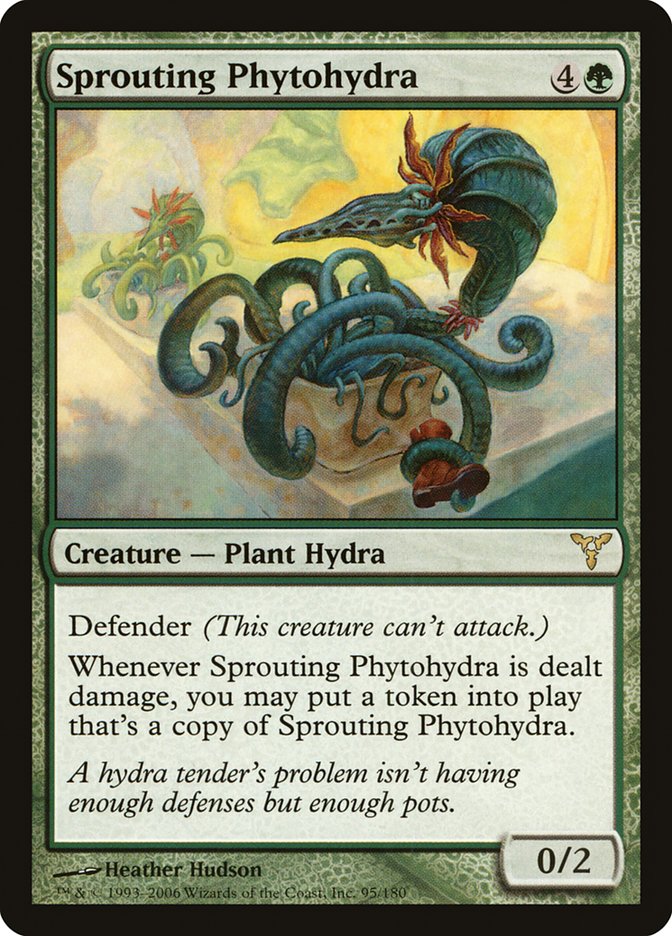
Sprouting Phytohydra is another example of a really fun design. A five mana 0/2 isn’t usually a stat line you’re excited about, but the ability it’s got is super fun. In one way, it can effectively block forever. Block with it, it’s dealt combat damage, dies, and makes a copy to block again next time. It gets really fun if you can deal one point of damage to it (or more if you can raise its toughness). In this case, it’ll make a copy of itself and stick around. Do it again? More copies! Spouting Phytohydras for days!
#18. Phytohydra

I think I’m starting to fall in love with plant hydras (yes, I’m a Johnny at heart). Another five-mana 1/1, this one grows as it’s dealt damage. It can also block pretty much forever, as the damage dealt to it is prevented. It also grows into an absolute monster in the process. The Vigor ability is so sweet and simply unstoppable for some decks.
#17. Wall of Blossoms
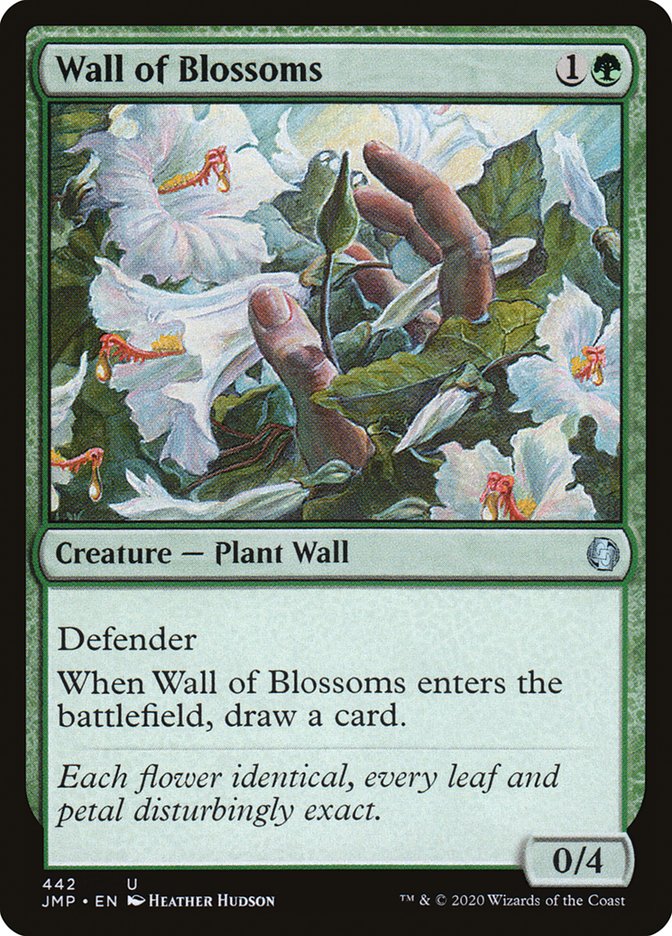
I love cards like this. They seem pretty innocuous at first glance. A 0/4 that draws a card? Turns out, though, that it’s just the right card to make a particular kind of deck work! It just shows up in so many lists as a way to make combos more consistent while holding the fort until you can actually go for the combo. Simple design, deceptive power.
#16. Tree of Perdition
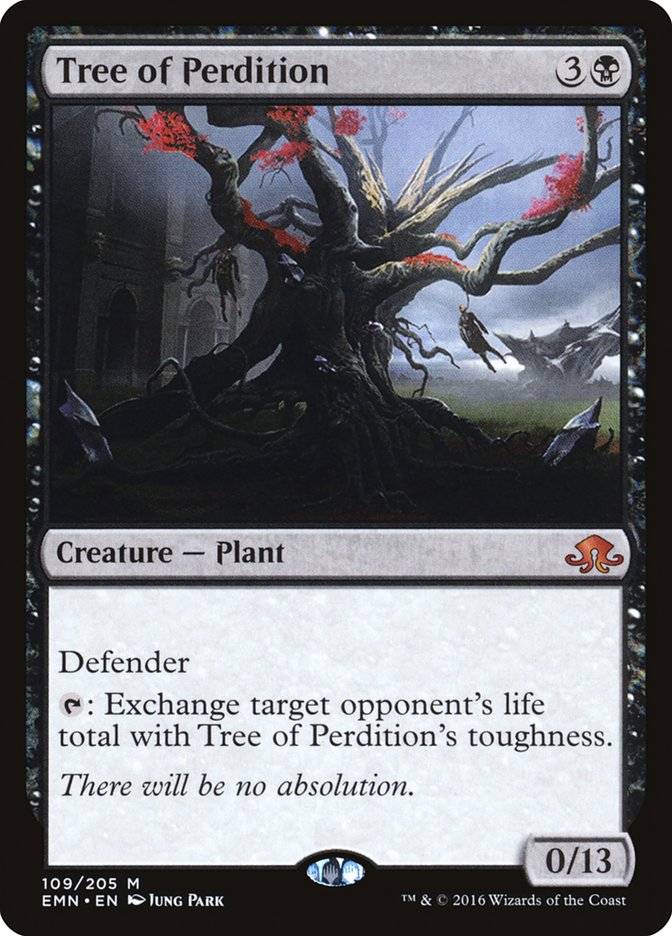
How did I end up with this as number 16 and not number 13? Maybe I should go back and jiggle things around a little…
Ok, maybe that would be taking things too far. Tree of Perdition is a super fun design, which can do some strange things in Magic. Exchanging its toughness with your opponent’s life is super weird and leads to some odd circumstances. The only thing really holding it back is the fact it starts at 13 toughness. Taking your opponent down to 13 usually isn’t particularly amazing…
#15. Tree of Redemption
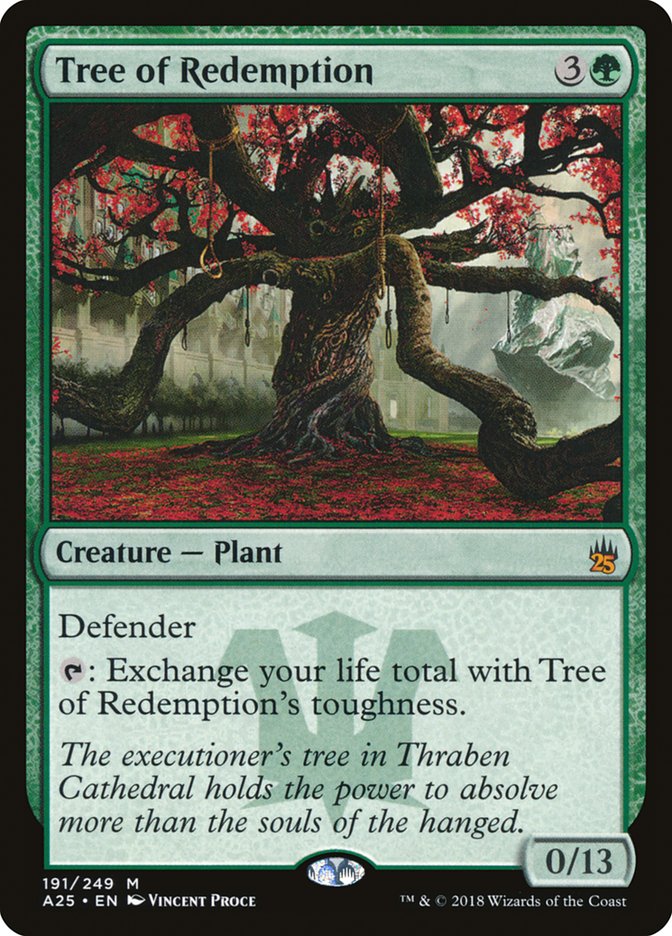
Tree of Redemption is the original version of Tree of Perdition, and, in my opinion, the more powerful version. You’re much more likely to want to pick your own life up back to 13 than you are reducing your opponent’s life to 13. It’s also easier to boost this tree’s toughness to gain more life than it is to reduce Tree of Perdition’s toughness to hit your opponent harder.
#14. Phytotitan
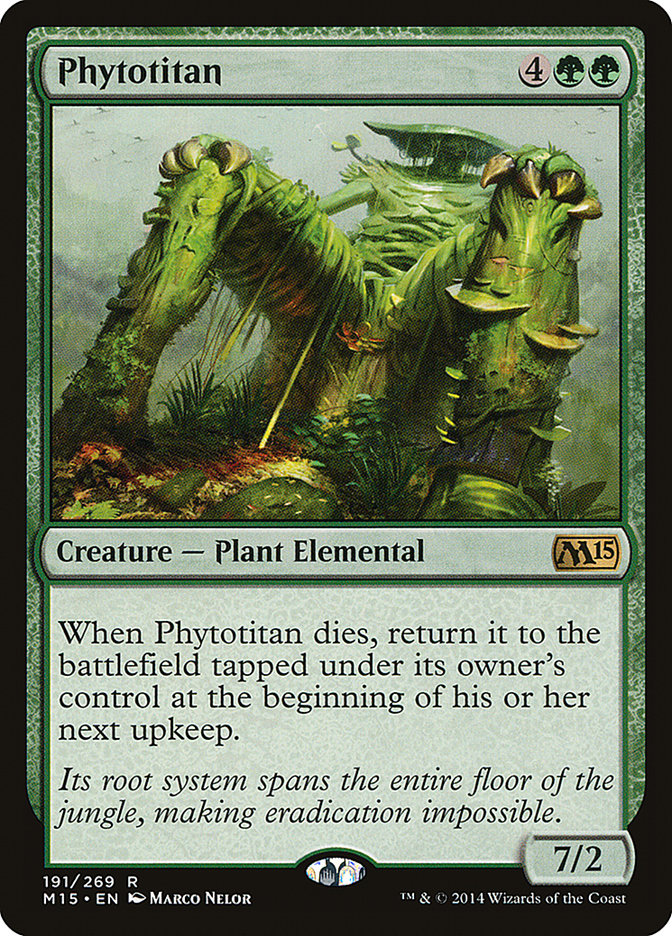
Phytotitan is a huge beater that’s incredibly difficult to deal with. It just keeps coming back, although you can’t quite attack with it every turn due to it coming in tapped. A recursive seven power threat is still nothing to sniff at, though!
#13. Vulturous Zombie
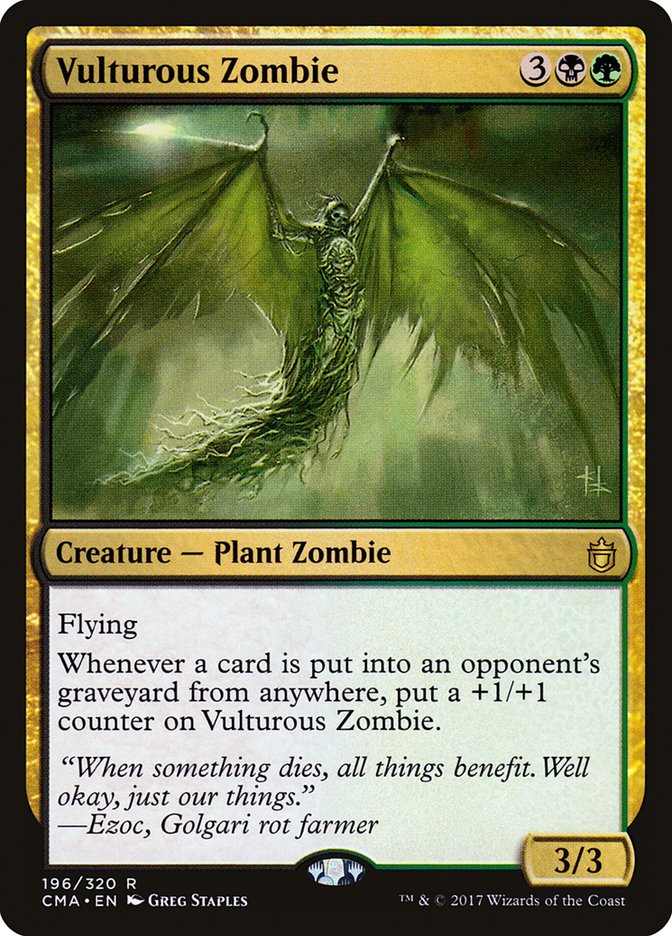
Vulturous Zombie is super easy to grow into a game-ending threat. Although it doesn’t work with self-mill, which is much more in Golgari’s () wheelhouse, there’s plenty of ways to get cards into opponents’ graveyards. In multiplayer games it’s even better, growing for each other graveyard on the field!
#12. Wall of Roots
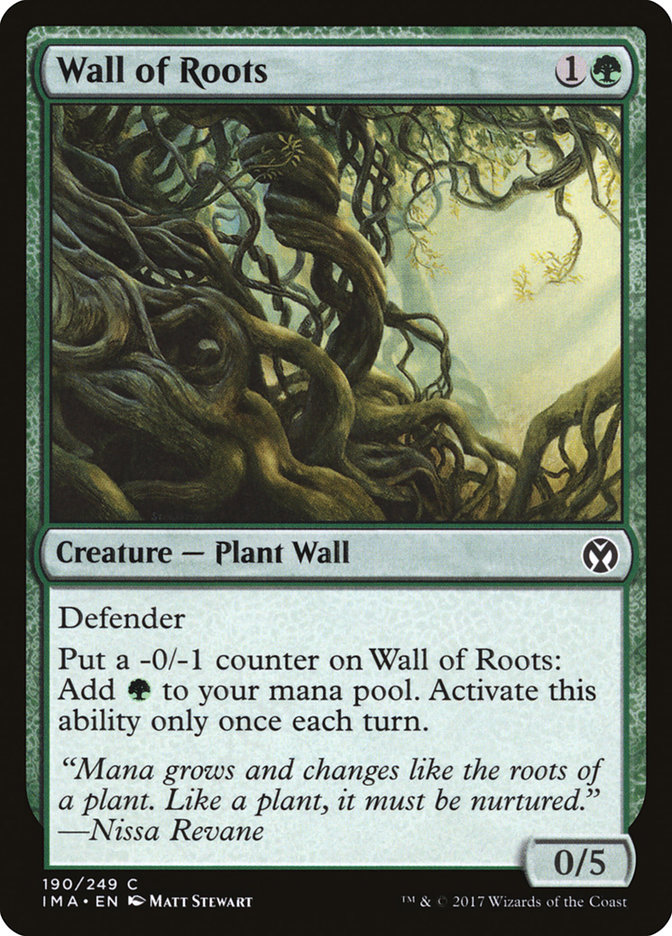
Wall of Roots is a great ramp piece that also keeps you alive if your opponent’s on an aggressive strategy. Although it shrinks every time you use it (and uses a rare -0/-1 counter), it has a big enough butt to block well even after a few uses. Also, as it isn’t a tap ability, you can use it to add mana on the turn it comes in, which isn’t a common effect for mana dorks. If you have a way to keep the counters from going onto it, such as Solemnity, you’re really laughing!
#11. Singing Tree
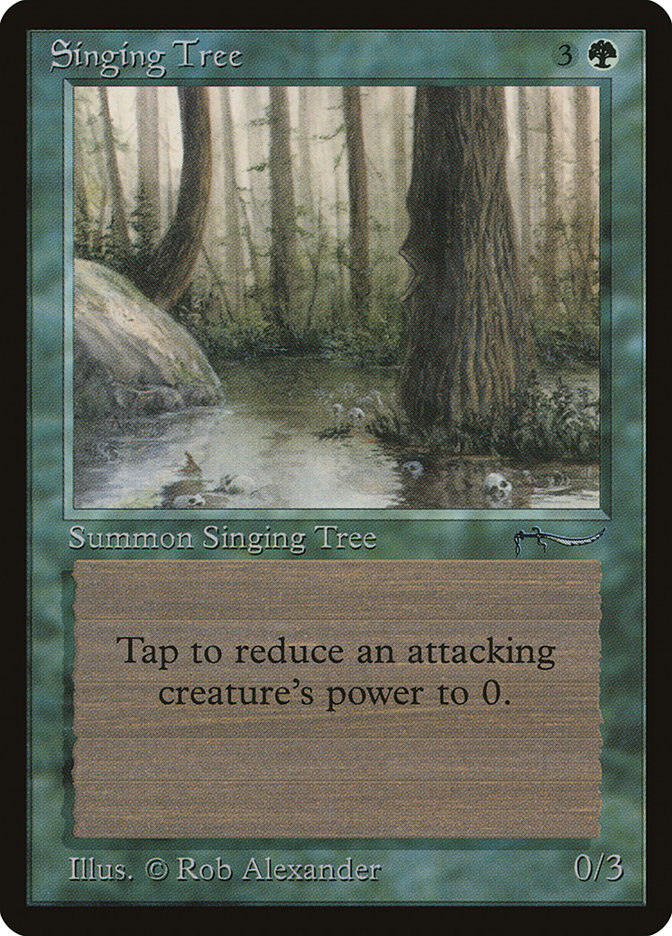
There’s a lot of plant creatures which are just meant to be speed bumps to aggressive strategies, but Singing Tree is a really interesting version of that. The tap ability is pretty unusual, and it can stop two creatures from hitting you in a single turn. Four mana is possibly quite a lot for the effect, though, but I thought it deserved a mention for its unusual design at least!
#10. Tinder Wall
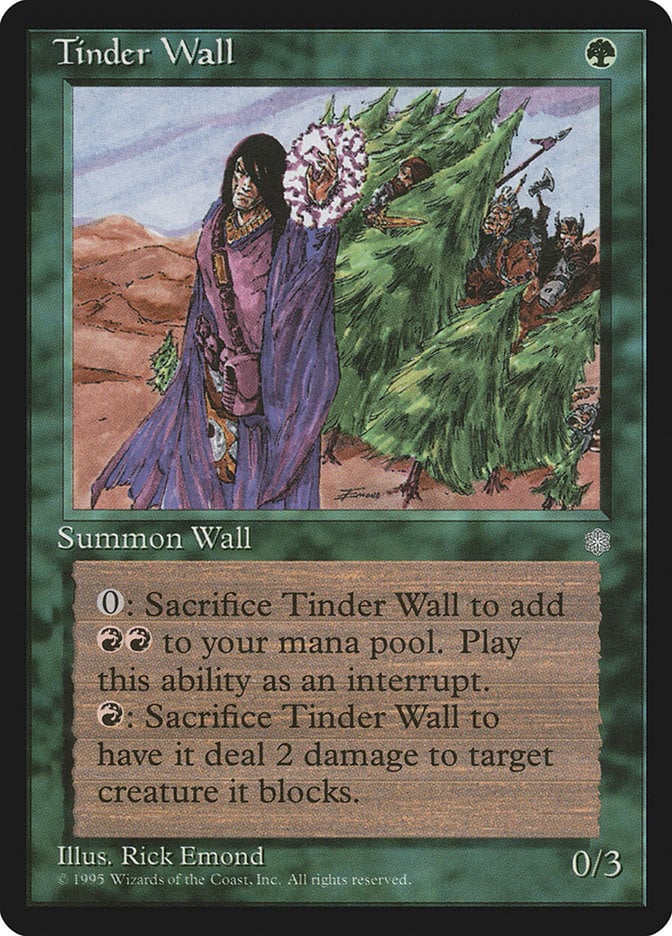
The more we dig into the older cards, the odder they get! Tinder Wall is arguably fast mana, but for some reason, I don’t see it played anywhere. It does allow you to get double red on turn one, though, so that’s got to be worth something. The second ability can also help out in a pinch too.
#9. Tangletrove Kelp
It's good when your clue ability is primarily for flavor on a rather powerful transfiguration creature. Tangletrove Kelp makes your best investigation cards give you titanic beaters. Just remember that a Clue token can still suffer summoning sickness, though if you've made clues on your opponent's precombat main phase, your blocking strength increases greatly.
#8. Rumbleweed
Rumbleweed won't snowball, it will just finish games like Overrun, especially if you have six lands in the graveyard. This card is missing haste to becoming as strong as the great End-Raze Forerunners and Craterhoof Behemoth. Regardless, “It's a one-ecosystem army.”
#7. Topiary Stomper
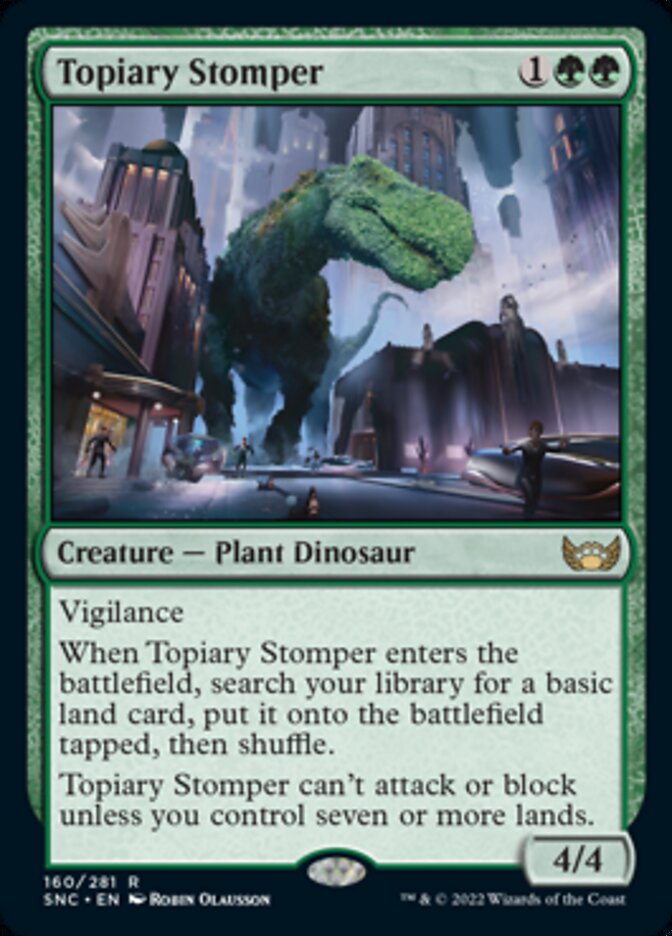
While it’s far from a new creature that’s taking over all formats, Topiary Stomper shows up from time to time in both Standard and Pioneer as a ramp piece that can do its fair share of beating/blocking in the mid to late game. Possibly relegated to a brew enabler, it still sees frequent enough play to rank near the top of this list.
#6. Genesis Hydra
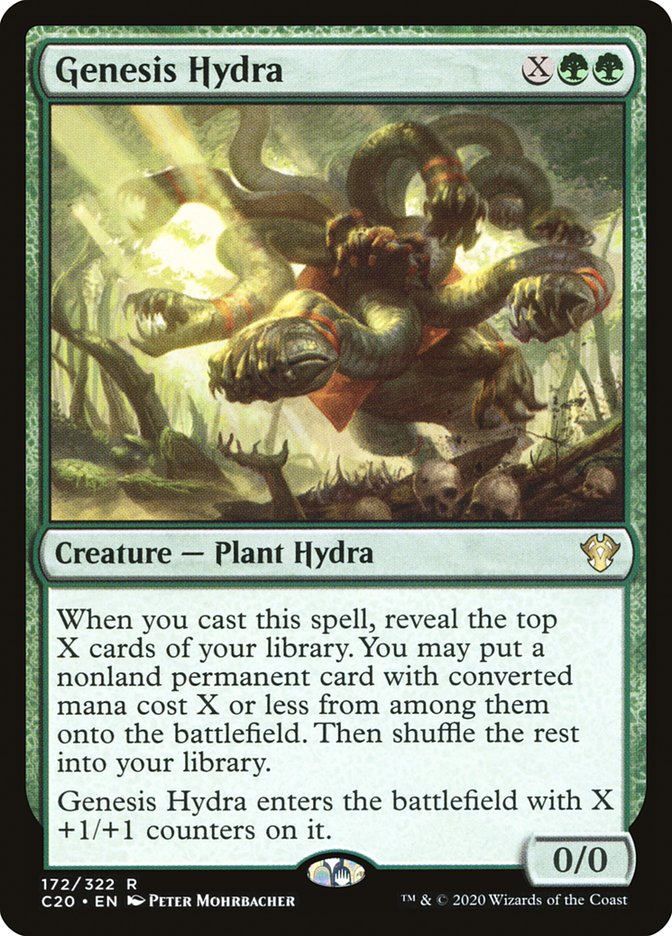
If you want some Timmy/Johnny shenanigans, you want to take a look at Genesis Hydra. Not only do you get a big fatty from it, you also get something from the top of your deck. These chaotic styles of value cards are always popular on the EDH table, as you never really know what you’re going to get!
#5. Sylvan Caryatid

The problem with most mana dorks is that they’re easy to deal with. “Bolt the Bird” is a saying among Magic players for a reason. Sylvan Caryatid doesn’t have that problem, though, as it has hexproof. This card pops up in a variety of decks from time to time and is a great green ramp piece for combo decks. Adding one mana of any color, rather than just green, lets it fit into some pretty greedy combo decks too!
#4. Kirri, Talented Sprout
Grow a sustainable garden with Kirri, Talented Sprout with there's so many ways to gain value from recycling your plants, treefolk and lands (as in fetch lands, deserts and any others that need to be sacrificed). That two power is quite a pump!
Avenger of Zendikar can be a pricy mainstream card, whereas Khalni Garden, Assemble the Entmoot, and Nissa, Voice of Zendikar can be found off the beaten path.
#3. Rampant Rejuvenator
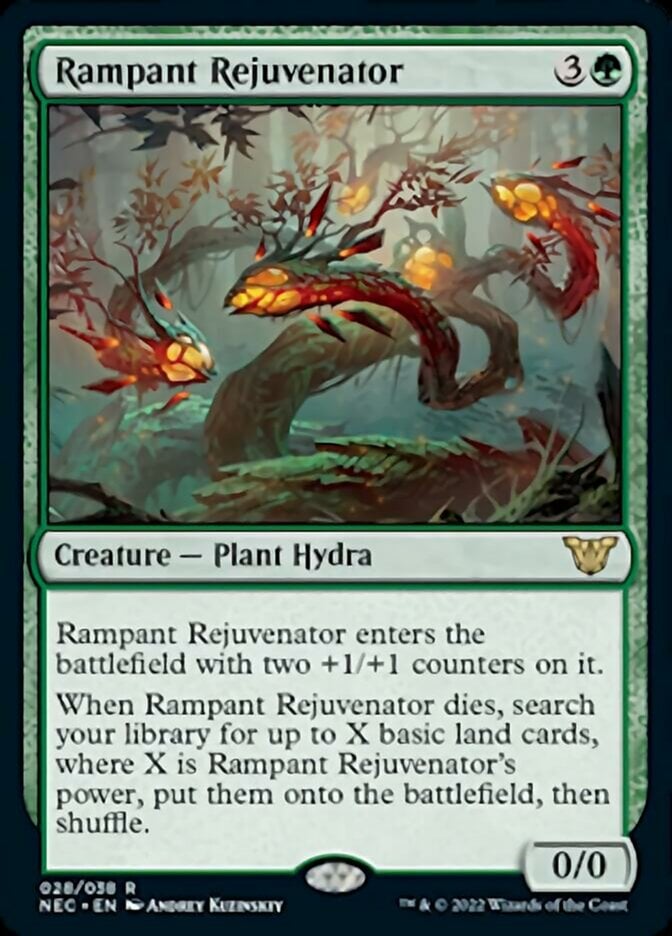
One of the best plant cards is one straight out of a Commander preconstructed deck: Rampant Rejuvenator. There are so many ways to abuse this, either by increasing the counters you can put on it or looping it again and again. Before long you’re going to have a board full of lands, and from there your deck will be well-thinned, ready for you to draw your gas, and cast it with all this mana you now have! You just need to make sure you have enough basic lands to get the best use out of this.
#2. Cultivator Colossus
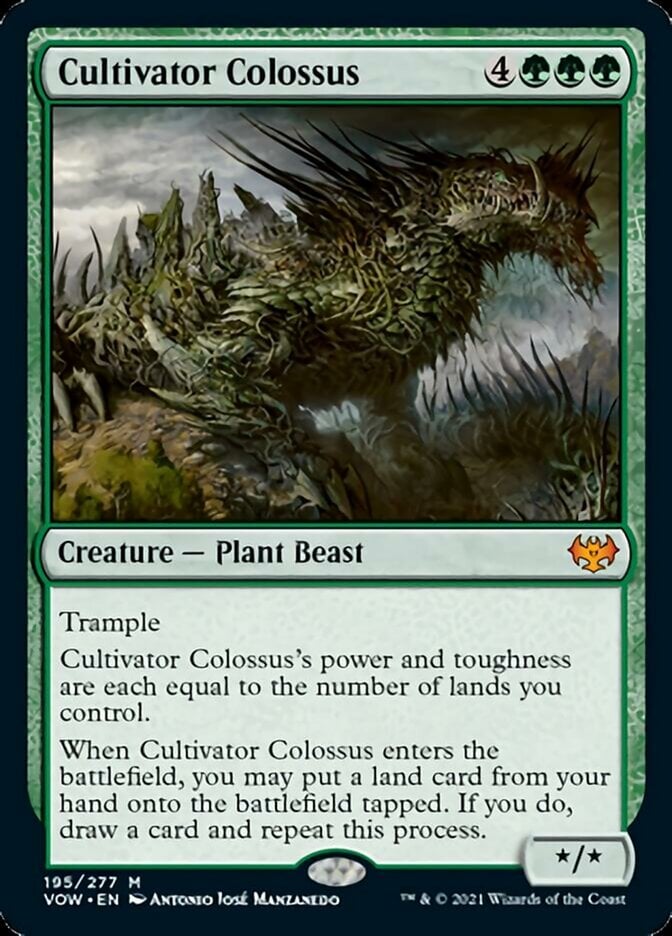
Coming in near the top of our list is a beast. Cultivator Colossus is a very powerful card, both ramping you and drawing cards. That’s before we mention its interaction with Abundance, which allows you to draw your deck. On top of all that, it’s a big trampling beater. If you can play this in EDH and give it haste, you’re likely to be able to take out one opponent in a single hit. Thoroughly deserving the high-ranking spot on this list!
#1. Bristly Bill, Spine Sower
Bristly Bill, Spine Sower has two great abilities that are incredible to find on a 2-drop. Landfall for +1/+1 counters can quickly be more than one additional counter per turn. The power to double your counters on a non-tapping activated ability is absurd. Bristly Bill does a great job circumventing one of the issues with counter doublers that need another source to add counters in the first place. Watch out for this prickly druid!
Best Plant Payoffs
Plants are far from a well-supported creature type, but we can’t talk about plants without talking about Avenger of Zendikar. Not only does it create a bunch of plants when it comes in, it also grows all of your plants, including the non-token ones. While you can happily play it in a non-plant deck, you pretty much have to run it in a plant focused deck!
Kirri, Talented Sprout has the honor of appearing on this list and being a payoff for playing plants, good card for turning any Magic player into a greenthumb. Insidious Roots is certainly a way to boost your plants, even if it is a bit tricky to play with since only specific effects cause creatures to leave your graveyard, though namely, collect evidence, delve and cards like Lion Sash, Scavenging Ooze, and Agatha's Soul Cauldron play key roles in decks.
Is Saproling a Plant in MTG?

No, saprolings aren’t plants in MTG. If we’re going to put our biologist hats on for a moment, Saprolings are possibly seen to be closer to a fungus than a plant.
Final Harvest
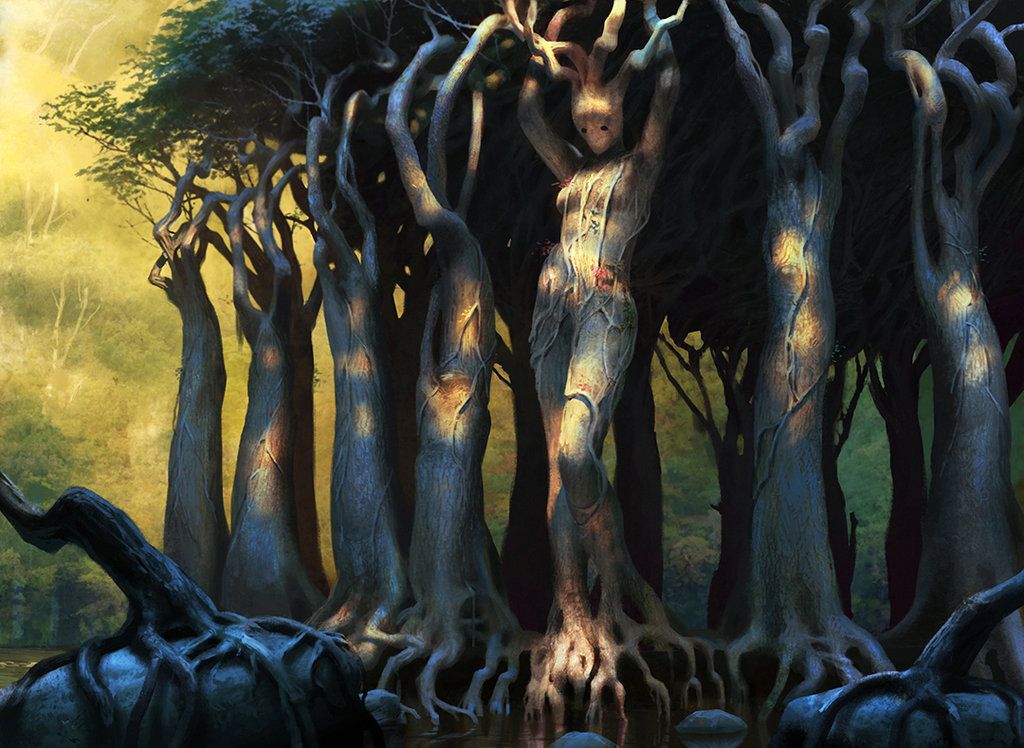
Sylvan Caryatid | Illustration by Chase Stone
So that’s it, we’ve looked into all of these verdant beasties. It’s pretty clear that they’ve never been a focused-on tribe, but there’s some strong themes throughout the cards we’ve talked about, as well as some interesting designs.
Will we ever see a plant commander? Well, I think with the way Commander releases are going, it’s probably likely at some point. What would it look like, though? And what colors would it be? Feel free to brainstorm in the comments, or let us know over on the Draftsim Twitter.
That's all from me for now. Stay safe, stay healthy, and wash your hands!
Follow Draftsim for awesome articles and set updates:
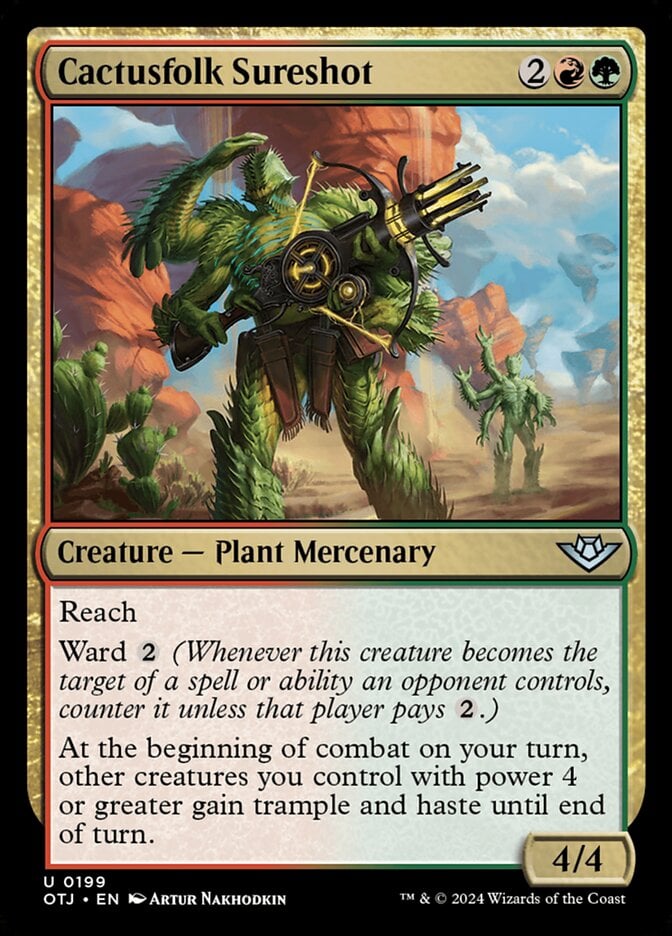
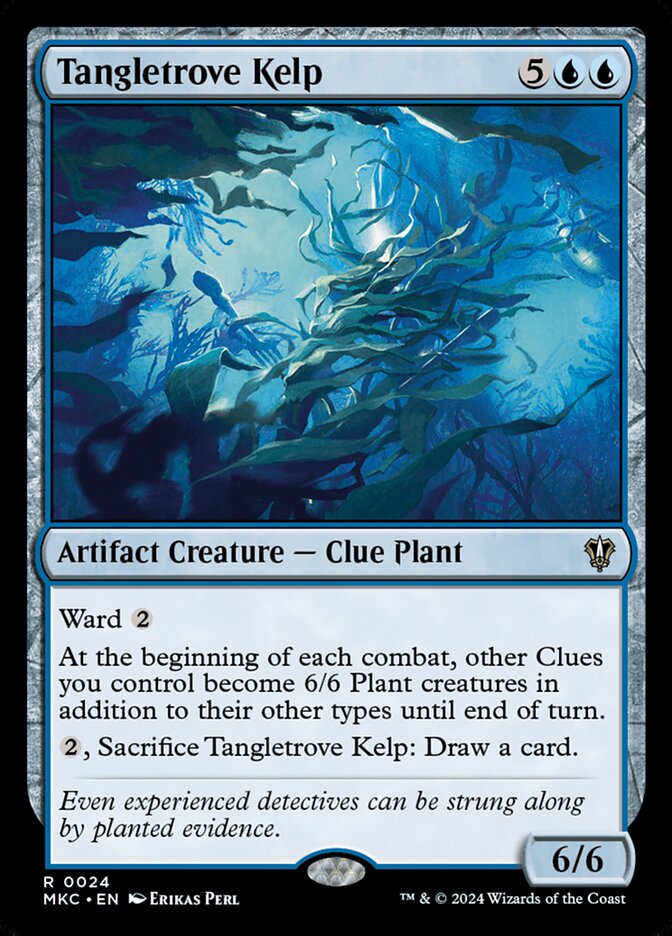
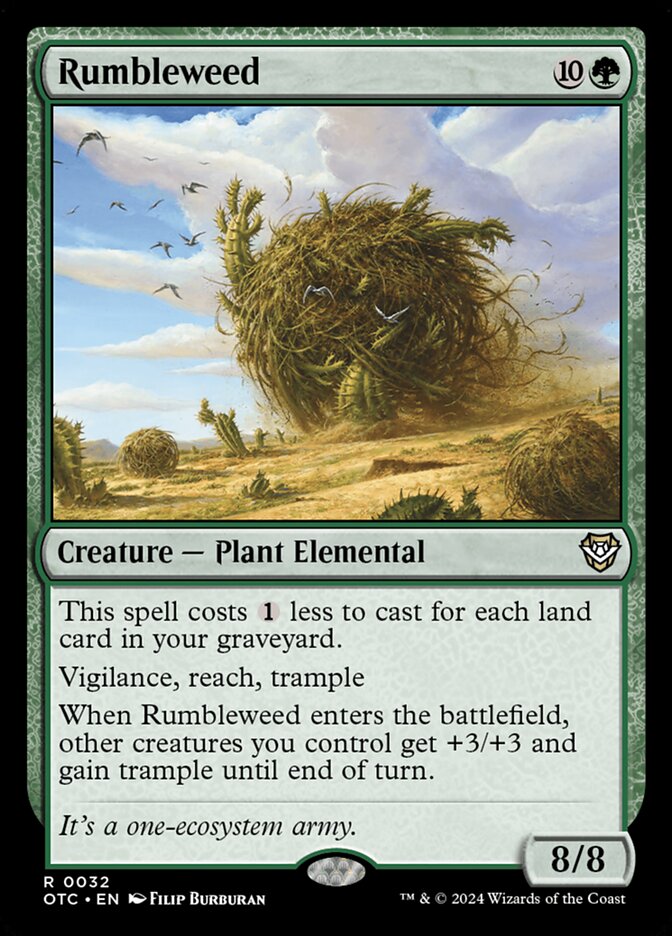
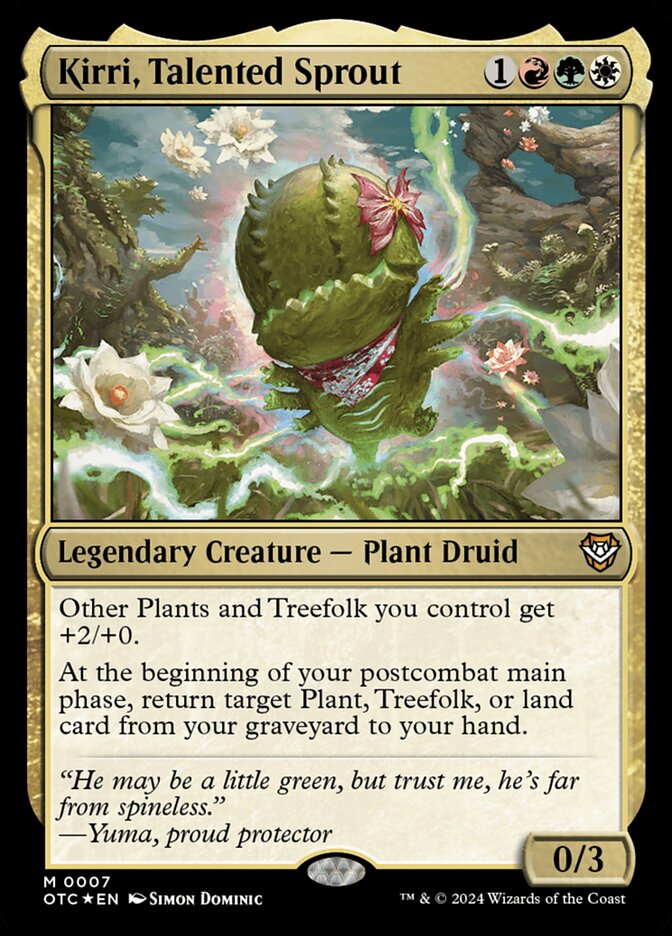
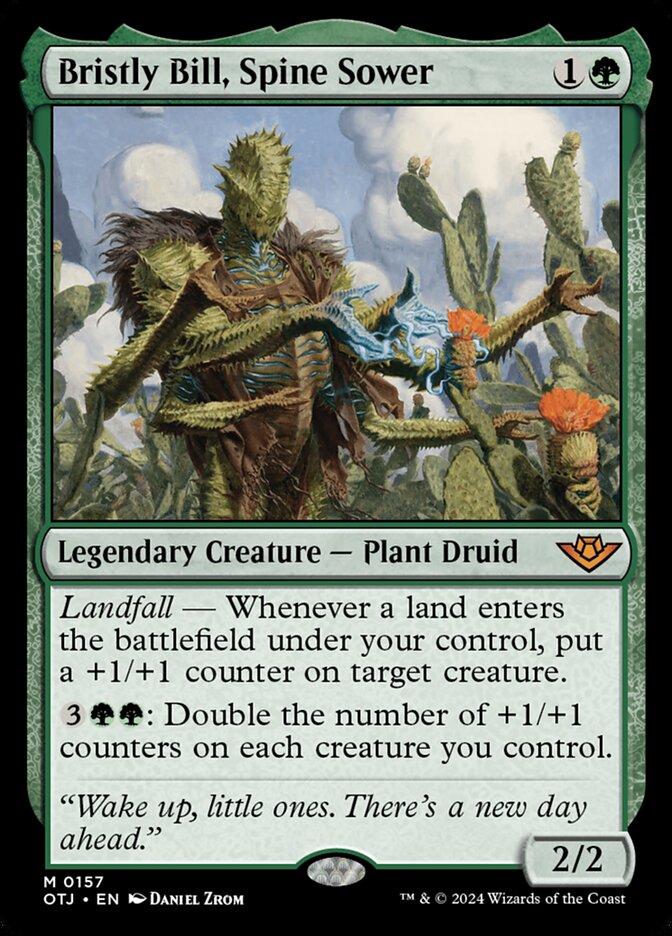

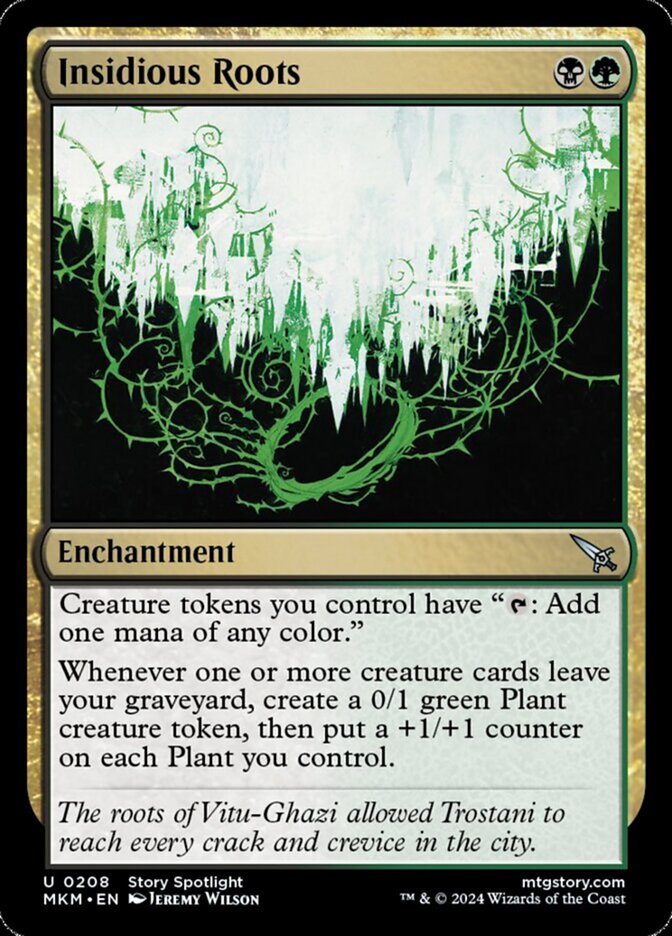


Add Comment